Melting glaciers store up trouble
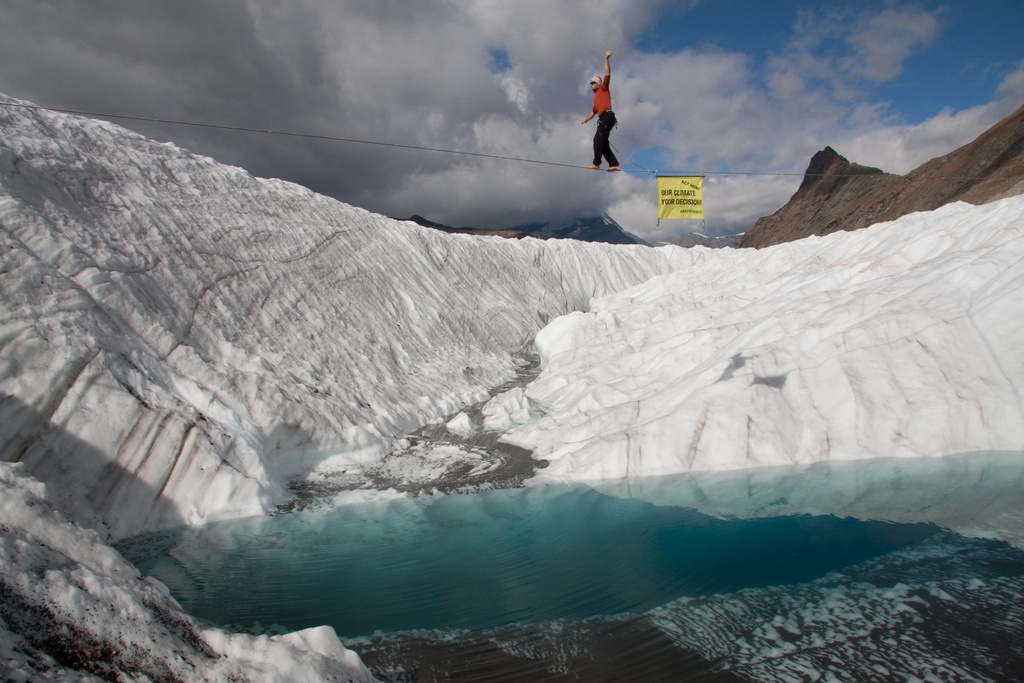
As the alpine glaciers shrink they will affect the flow of Europe’s biggest rivers, impacting areas of the economy ranging from shipping to power generation.
Glaciologist Matthias Huss of Fribourg University has discovered that right down to the sea, the Danube, Rhine, Rhone and Po contain a larger proportion of water from glaciers than previously thought.
For example, more than a quarter of the water that flows from the Rhone into the Mediterranean in August has its origin in alpine glaciers. At its mouth in the Netherlands seven per cent of the water in the Rhine is glacier run-off, even though glaciers cover only two thousandths of its total catchment area.
But the alpine glaciers are shrinking, and will continue to do so. And once a glacier has become too small to feed a river, “there is no way to bring it back”, as Huss pointed out to swissinfo.ch.
If – or when – the flow decreases, this will have a knock-on effect on such things as river shipping (the Rhine and the Danube are major European transport routes), on hydropower generation (about a quarter of Switzerland’s power comes from run-of-river power stations and nearly a third from reservoirs) and on agriculture.
It’s not that there would be a lot less water overall, but that it would be there at the wrong time for human needs. Whereas the water coming from the sky as snow in winter is now stored in the glaciers and released in the summer, in the future it will enter the river systems much more quickly. This could mean floods in spring as the snow melts, and low water levels and even drought in the summer.
Certainties and uncertainties
But before that happens, the problem will not be immediately obvious. It will only kick in after about 2050. Until then, as the glaciers melt, they are actually producing more water. It is only in the second half of the century that the glaciers will be too small to yield enough water in summer.
Huss admits that there are a lot of uncertainties about the rate at which the glaciers will retreat – but no doubt that they will continue to do so.
“I took one plausible climate scenario, but actually we do not really know how it will change. The uncertainties in these estimates are still large. I’m projecting a decrease of the alpine glacier surface by 90 per cent in the next 90 years, but it’s also possible that everything will have gone completely.”
That is the worst case scenario; in the best case perhaps 30 per cent would remain, he said.
Measuring flow
For his research, Huss had a lot of historical information at his disposal.
As far as the rivers are concerned, there are stations at specific points along their lengths which have measured the flow over the last century. As for the glaciers, about 100 years’ worth of field data was available for 50 of them, while maps made 20 and 30 years ago showing the heights of the glaciers at that time enabled him to work out how many cubic metres of water had been lost between then and now.
He also conducted his own complex field work on the glaciers, measuring how much the ice had melted. Then he compared the water input from the glaciers with the water in the rivers: “an obvious thing to do, but it needed to be done”, as he put it.
Solutions
The necessary adaptations to cope with the new state of affairs are a matter for politicians and economists. What scientists can do is to provide a planning basis for decision makers.
But Huss is relatively upbeat.
“I think it’s a matter of understanding the situation. In Europe we are financially well off, we have the possibility to adapt, to build something new, to change things.”
Pierluigi Calanca of the Agroscope Reckenholz-Tänikon research institute, which specialises in agriculture and the environment, stressed that the problem would be to ensure “a sufficient availability of water throughout the year”.
“Technical solutions will have to address primarily the seasonal distribution of water resources, rather than the absolute amounts,” he told swissinfo.ch.
For example, an increased use of hydroelectricity – which is in any case likely if Switzerland sees through its plans to abandon nuclear energy – could lead to conflicts of interest.
“The energy industry has to provide a specific amount of power over the course of the year and to do this it might well have to hold back more water, and that could indeed be a problem for agriculture,” he explained. Farmers need the water at specific times, but they can’t ask power providers to open the sluices to water their crops.
Not only Europe
Huss warns that other parts of the world, such as the Himalayas and the tropical Andes, will face similar problems. But since conditions there are not necessarily the same as they are in the Alps, his research cannot be carried over directly.
Nevertheless, it is certain that glaciers everywhere are going to retreat or even disappear, even if it is not clear how fast this will happen.
Different topological conditions mean that solutions cannot be carried over either. The Andes, for example, are characterised by steep slopes and deep valleys, where additional reservoirs would be hard to build, Calanca pointed out.
“People there have far fewer possibilities to adapt. I think the problems discussed here are much more significant in other regions of the world,” said Huss.
The latest report on glaciers issued by the Swiss Academy of Sciences says that of the glaciers whose length it monitored in 2010, 86 had retreated, six had barely changed, and three had advanced slightly.
The greatest retreat was measured at the Gauli glacier in canton Bern, whose tip had shrunk by 196 metres.
The Academy said the glacier’s tongue was surrounded by a lake, which had been speeding up its retreat over the past few years.
The greatest advance was 14 metres at the Trient glacier in canton Valais. In previous years it had been retreating. The tongue of the glacier is in a position where it is likely to advance and retreat irregularly.
It is not only the length that is measured. The mass balance – the difference between the snow that accumulates and the ice that melts – is also monitored.
There has been a noticeable loss in mass since the 1990s.
Glaciers are large masses of snow, ice and rock debris that accumulate in great quantities and begin to flow outwards and downwards under the pressure of their own weight.
They are formed when yearly snowfall in a region far exceeds the amount of snow and ice that melts in a given summer.
In Switzerland, glaciers play an important role as water reservoirs for hydro-power production (generating 50% of the country’s electricity).
They are also considered an important attraction for tourists.

In compliance with the JTI standards
More: SWI swissinfo.ch certified by the Journalism Trust Initiative
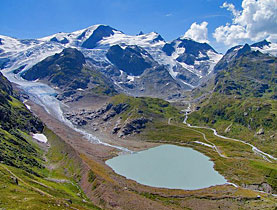
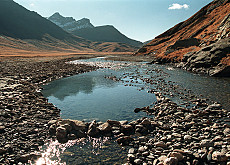
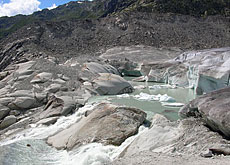
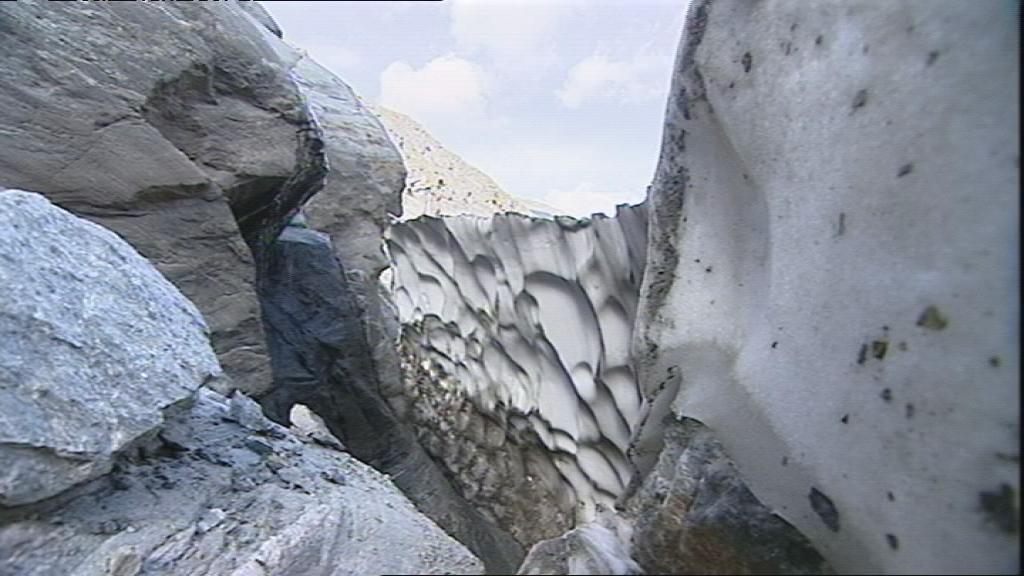
You can find an overview of ongoing debates with our journalists here. Please join us!
If you want to start a conversation about a topic raised in this article or want to report factual errors, email us at english@swissinfo.ch.